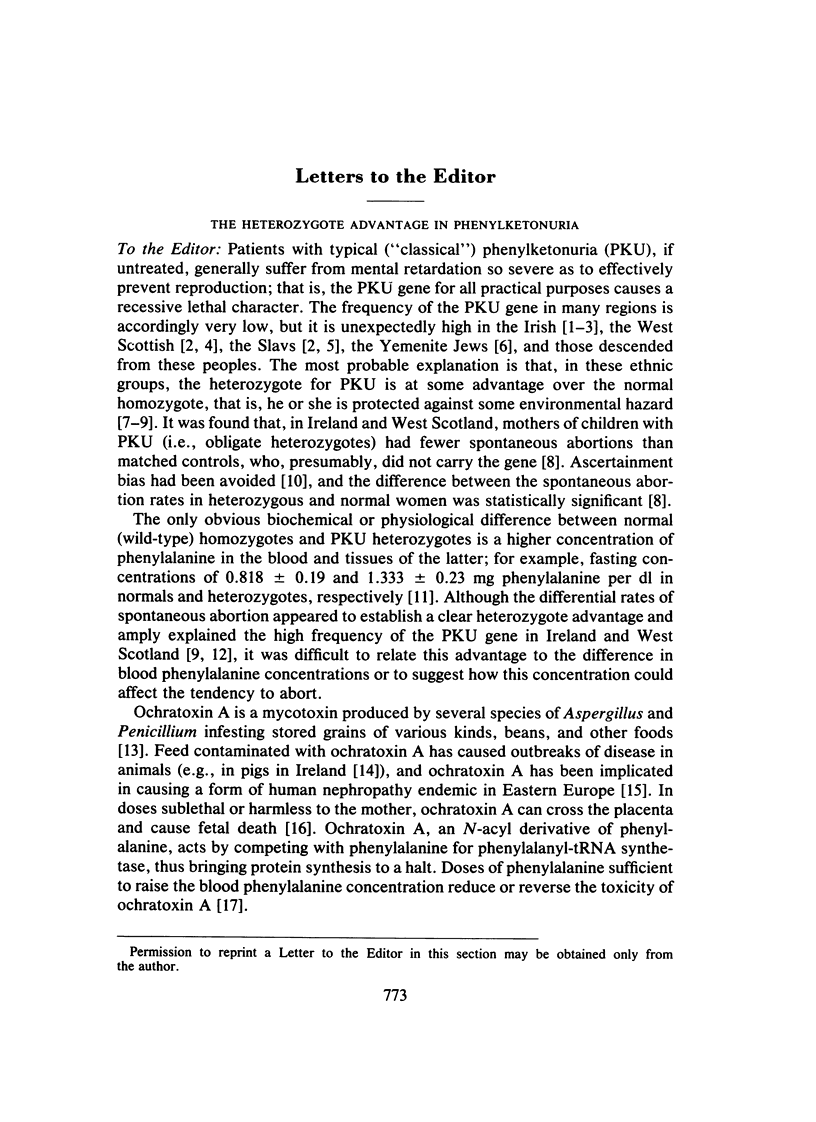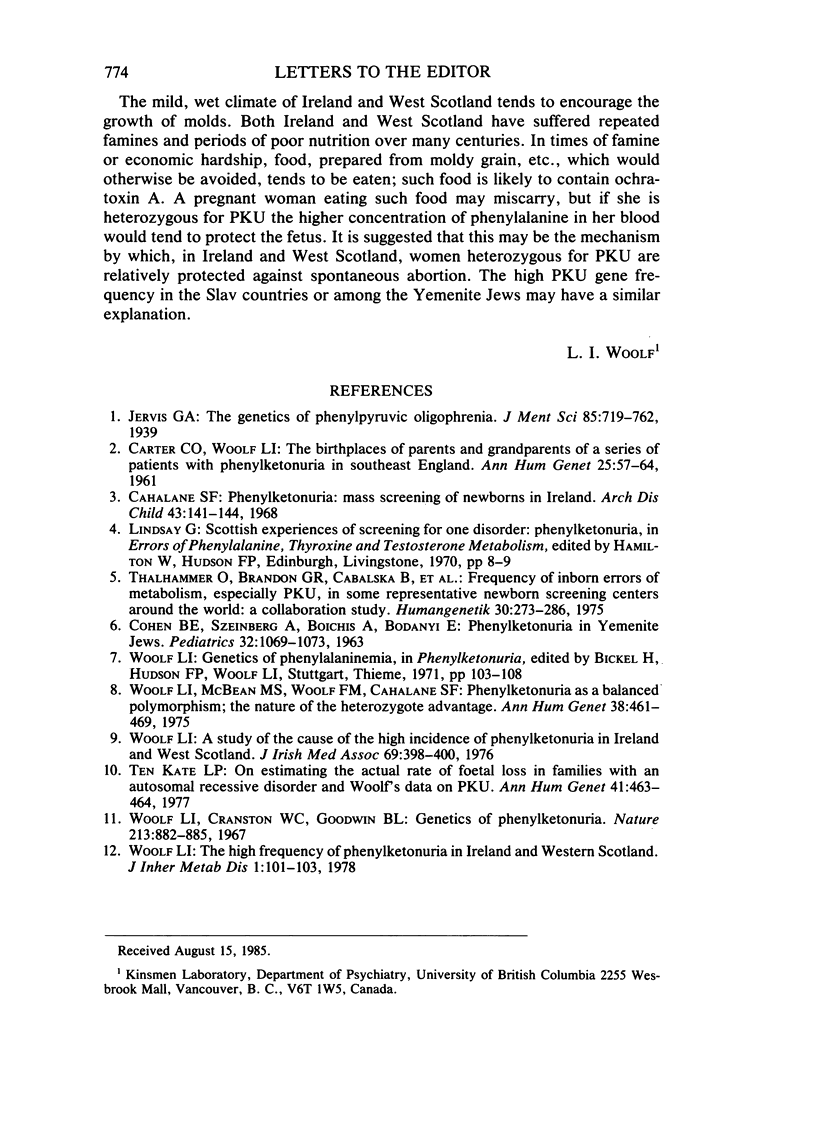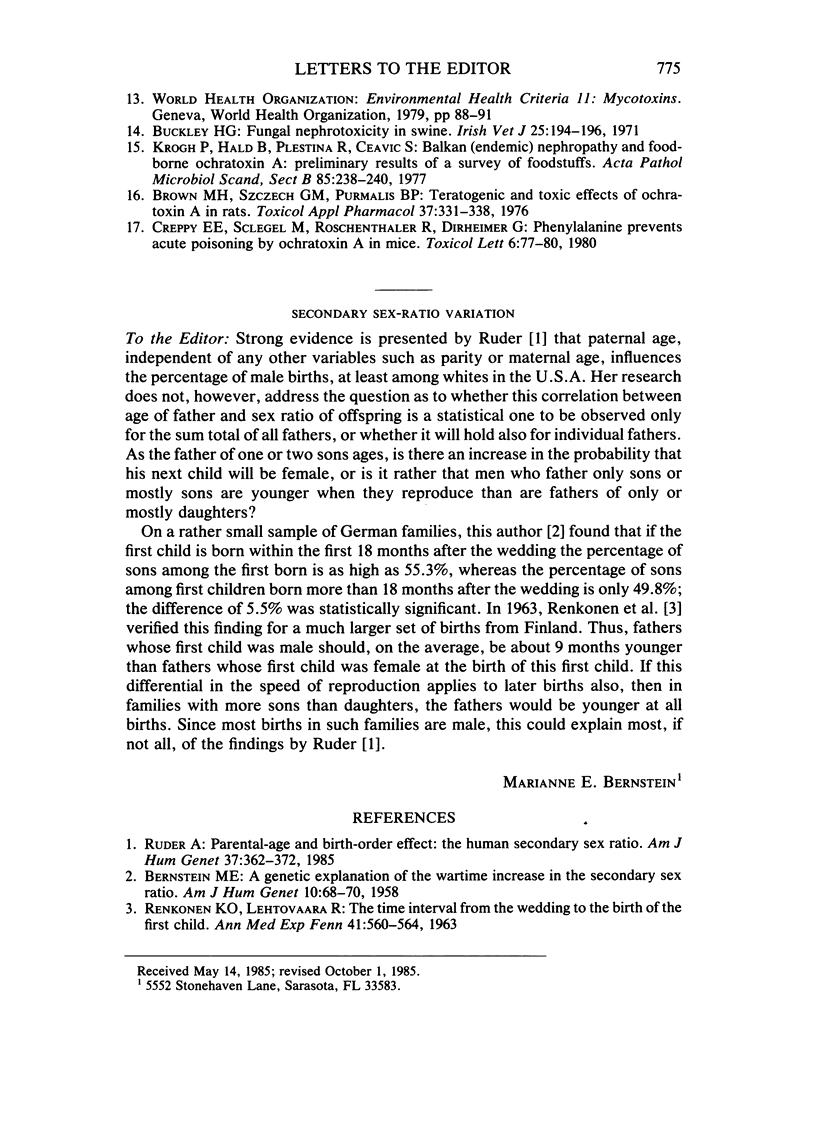Full text
PDF


Selected References
These references are in PubMed. This may not be the complete list of references from this article.
- Brown M. H., Szczech G. M., Purmalis B. P. Teratogenic and toxic effects of ochratoxin A in rats. Toxicol Appl Pharmacol. 1976 Aug;37(2):331–338. doi: 10.1016/0041-008x(76)90096-x. [DOI] [PubMed] [Google Scholar]
- Bull H. G., Luhr H. G., Schmidt-Hoberg W. Klinische Ergebnisse der Differentialdiagnostik des sogenannten Gesichtsschmerzes. Zahnarztl Prax. 1974 Apr 19;25(8):194–196. [PubMed] [Google Scholar]
- CARTER C. O., WOOLF L. I. The birthplaces of parents and grandparents of a series of patients with phenylketonuria in in south-east England. Ann Hum Genet. 1961 May;25:57–64. doi: 10.1111/j.1469-1809.1961.tb01497.x. [DOI] [PubMed] [Google Scholar]
- COHEN B. E., SZEINBERG A., BOICHIS H., BODONYI E. PHENYLKETONURIA IN YEMENITE JEWS. Pediatrics. 1963 Dec;32:1069–1073. [PubMed] [Google Scholar]
- Cahalane S. F. Phenylketonuria. Mass screening of newborns in Ireland. Arch Dis Child. 1968 Apr;43(228):141–144. doi: 10.1136/adc.43.228.141. [DOI] [PMC free article] [PubMed] [Google Scholar]
- Creppy E. E., Schlegel M., Röschenthaler R., Dirheimer G. Phenylalanine prevents acute poisoning by ochratoxina in mice. Toxicol Lett. 1980 Jul;6(2):77–80. doi: 10.1016/0378-4274(80)90171-x. [DOI] [PubMed] [Google Scholar]
- Frequency of inborn errors of metabolism, especially PKU, in some representative newborn screening centers around the world: a collaborative study. Humangenetik. 1975 Dec 23;30(4):273–286. [PubMed] [Google Scholar]
- Krogh P., Hald B., Plestina R., Ceović S. Balkan (endemic) nephropathy and foodborn ochratoxin A: preliminary results of a survey of foodstuffs. Acta Pathol Microbiol Scand B. 1977 Jun;85(3):238–240. doi: 10.1111/j.1699-0463.1977.tb01702.x. [DOI] [PubMed] [Google Scholar]
- Woolf L. I. A study of the cause of the high incidence of phenylketonuria in Ireland and west Scotland. Ir Med J. 1976 Sep 30;69(15):398–401. [PubMed] [Google Scholar]
- Woolf L. I., Cranston W. I., Goodwin B. L. Genetics of phenylketonuria. Heterozygosity for phenylketonuria. Nature. 1967 Mar 4;213(5079):882–883. doi: 10.1038/213882a0. [DOI] [PubMed] [Google Scholar]
- Woolf L. I., McBean M. S., Woolf F. M., Cahalane S. F. Phenylketonuria as a balanced polymorphism: the nature of the heterozygote advantage. Ann Hum Genet. 1975 May;38(4):461–469. doi: 10.1111/j.1469-1809.1975.tb00635.x. [DOI] [PubMed] [Google Scholar]
- Woolf L. I. The high frequency of phenylketonuria in Ireland and Western Scotland. J Inherit Metab Dis. 1978;1(3):101–103. doi: 10.1007/BF01805682. [DOI] [PubMed] [Google Scholar]
- ten Kate L. P. On estimating the actual rate of foetal loss in families with an autosomal recessive disorder and Woolf's data on PKU. Ann Hum Genet. 1978 May;41(4):463–464. doi: 10.1111/j.1469-1809.1978.tb00916.x. [DOI] [PubMed] [Google Scholar]


